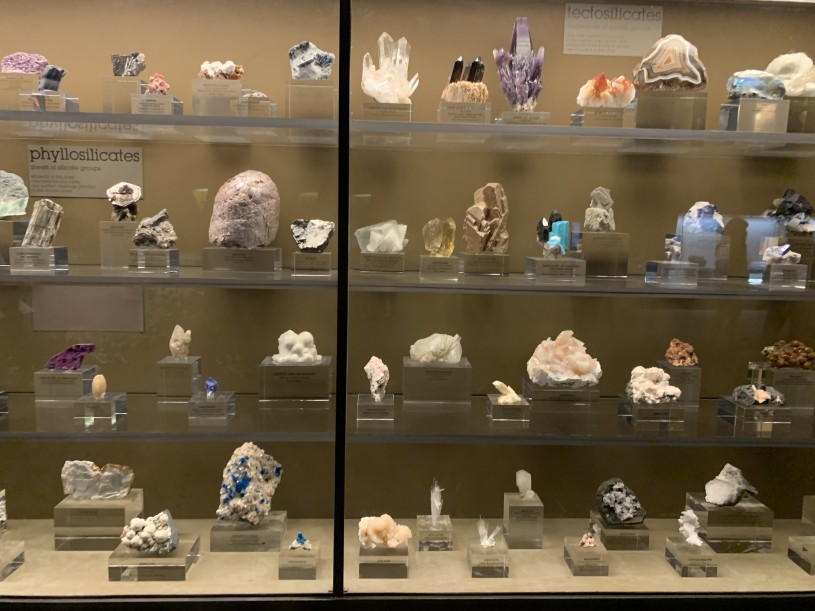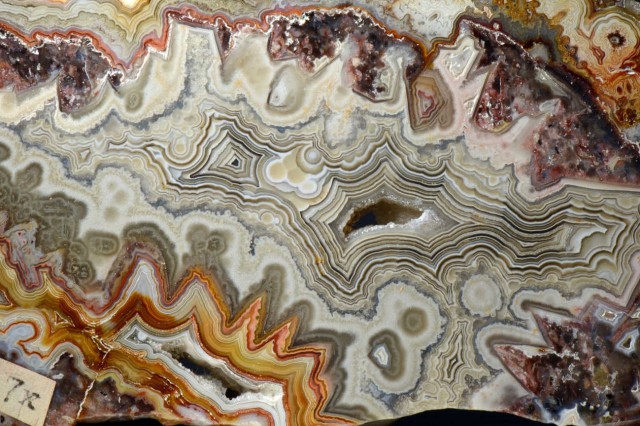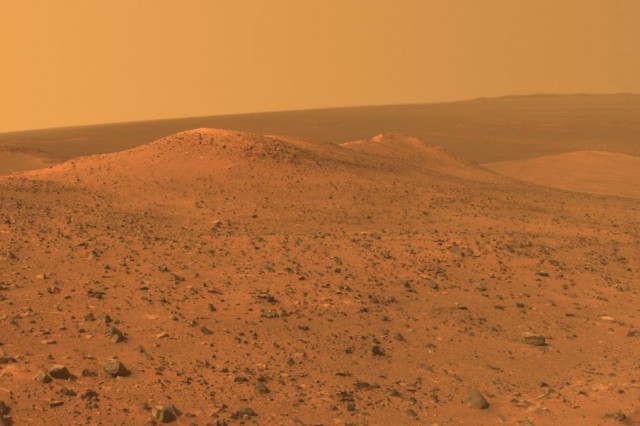Aaron Celestian Saves the Planet
No big deal, but our Curator of Mineral Sciences has a few Earth-shattering ideas—how to cure disease, protect the environment, and find extraterrestrial life.
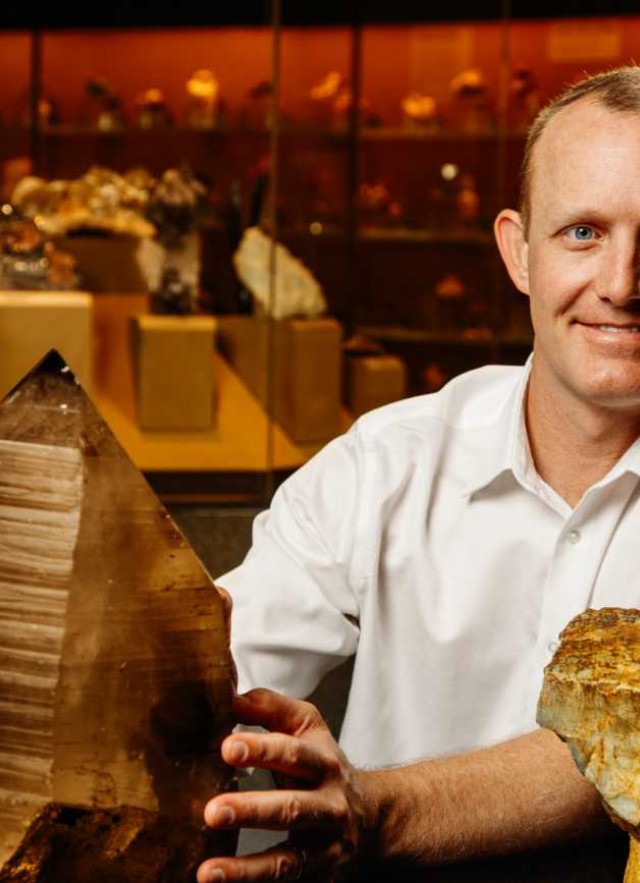
Published January 3, 2023
Tucked in the back of our Gem and Mineral Hall, past a vault displaying dazzling rubies, diamonds, and emeralds is the Mineral Sciences Lab, with cabinets full of crystals, a scanning electron microscope, and the glittering mind of Aaron Celestian. There, every day, the Curator of Mineral Sciences sets to work puzzling out how minerals can be harnessed to treat diseases, clean the environment, and discover life on other planets. In these quests, he has a coterie of fellow travelers—medical experts and other scientists at universities, pharmaceutical companies, and NASA’s Jet Propulsion Laboratory who are relying on his facility to see light years outside the box.
“I personally feel like I come from such a diversity of sciences that I can draw on my experience and apply it to lots of different fields and different problems,” says Celestian, who received his bachelor of science degree in geology from the University of Arizona and both master’s and doctorate degrees from Stony Brook University. He says his mission is to probe the secrets of how Earth materials grow, and then unlock their power to promote public health. A lot of environmental problems, he says, have to do with heavy metals—products of fuel cycles or industrial processes—and he’s adept at figuring out how to deactivate them using minerals. Celestian has also zeroed in on how minerals can solve medical problems.
Minerals and Medicine
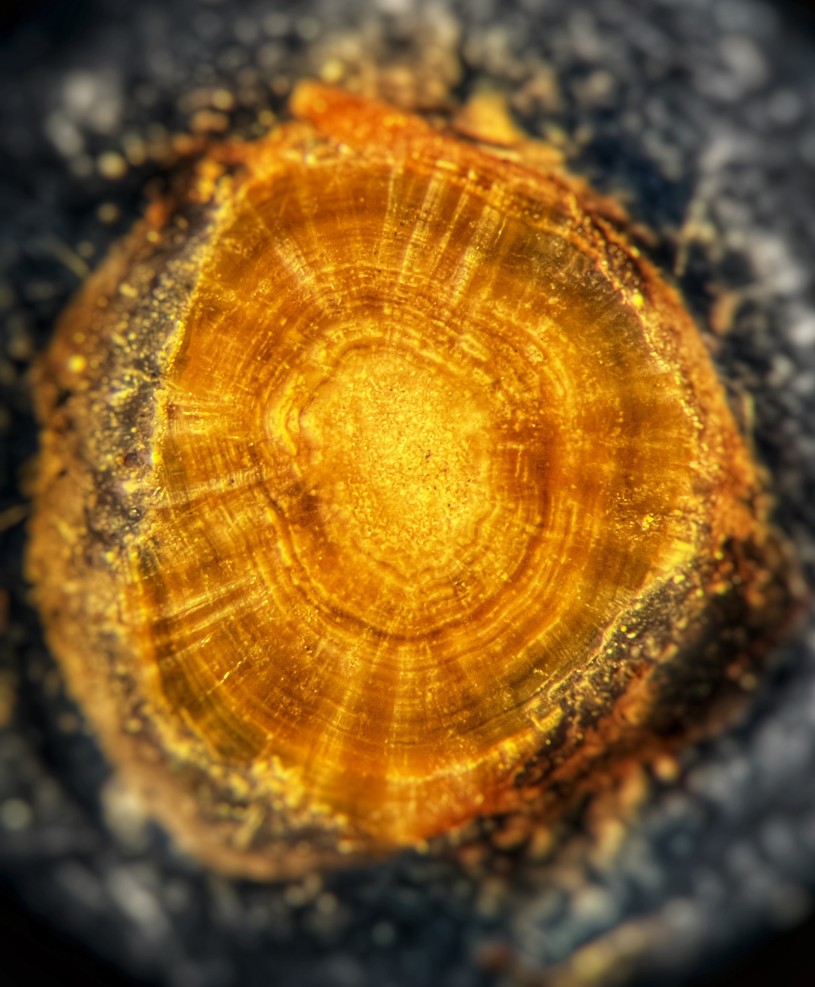
Take, for instance, hyperoxaluria, the vexing common condition where there is too much oxalate in the kidneys, forming “stones” that can’t be easily flushed out of the body. (Kidneys are essential organs designed to show liquid waste products the anatomical exit ramp.) Celestian is collaborating with Dr. Kymora Scotland and her students from UCLA to examine these pain-inducing growths under the microscope so they can understand the precise pathways that cause certain types to form as crystals commonly known as kidney stones. If bacteria, say, is involved in building this inconveniently placed rock formation, then researchers may be able to develop an antibiotic to halt the hardening.
“What’s exciting is to take something unrelated to human health and use that info to start curing diseases,” Celestian says. “That’s a transformative leap into the application of mineral sciences.”
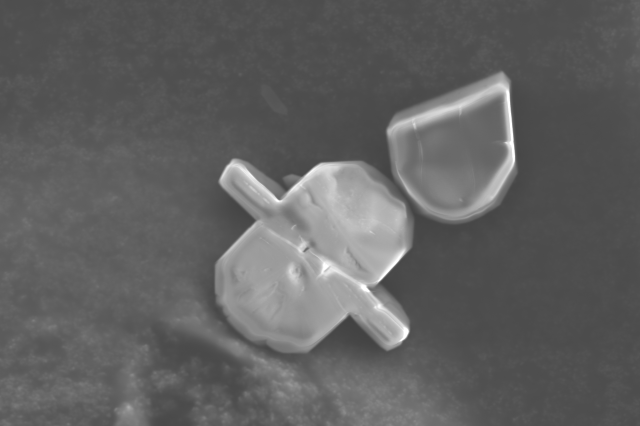
Pictured above, using a Scanning Electron Microscope, a lab-grown kidney stone.
1 of 1
Pictured above, using a Scanning Electron Microscope, a lab-grown kidney stone.
Pass the Salt
Celestian’s expertise in the environmental arena could be revolutionary. He and colleagues are working to create a less wasteful method of extracting lithium, a key ingredient in batteries. Currently, brine mines in the deserts of Argentina and Chile are pumping huge amounts of water underground, dumping the brine onto the earth’s surface, and letting the water evaporate into the atmosphere. Using X-rays and computational work, Celestian is concocting a material that would select for and absorb lithium directly out of the ground, extracting the prize like an atomic game of pick-up sticks. This would save billions of gallons of water and serve up a key ingredient that could speed up the clean energy revolution. “There are so many brine mines that we could have as much lithium as we need for all electric cars,” says Celestian. (Visitors can spot the Museum’s lithium crystal in a large case on the right as you enter the Gem and Mineral Hall.) “It's just so cool to think about how earth will save the Earth.”
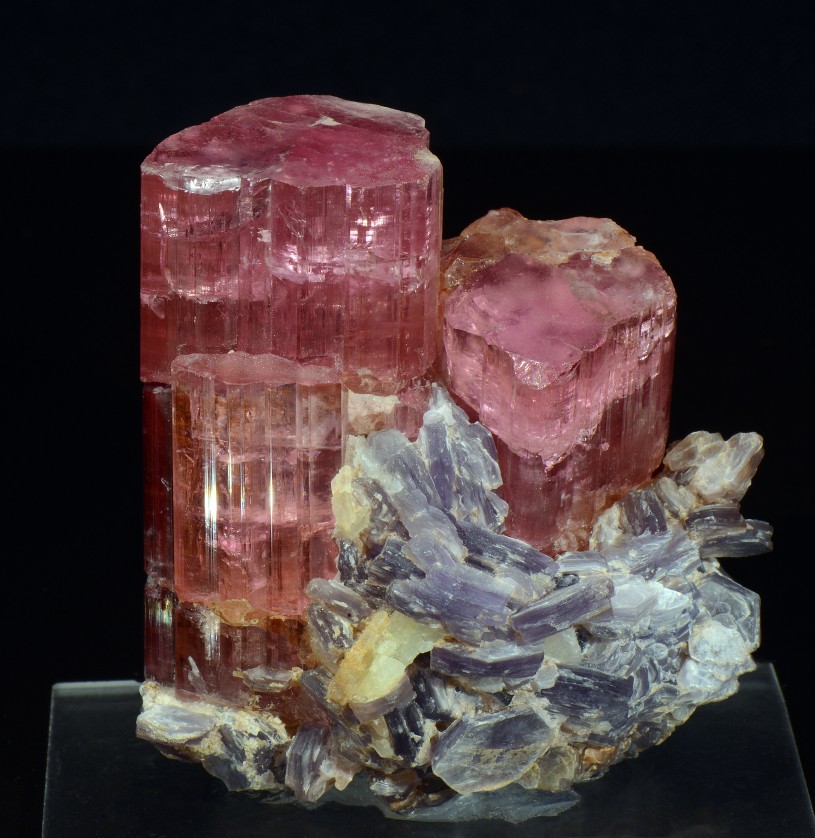
Other Horizons
But it doesn’t stop there. Celestian’s other work is equally stellar (he is aptly named!). As a member of JPL’s Origins and Habitability Laboratory, he’s investigating the role minerals play in preserving biosignatures (evidence of life or past life dead for millions or billions of years) should JPL’s rovers detect them on Mars. He is also using an “icy moon chamber” to replicate conditions on Europa, the icy moon of Jupiter, and see if bugs could survive the extremely cold temperatures and radiation.
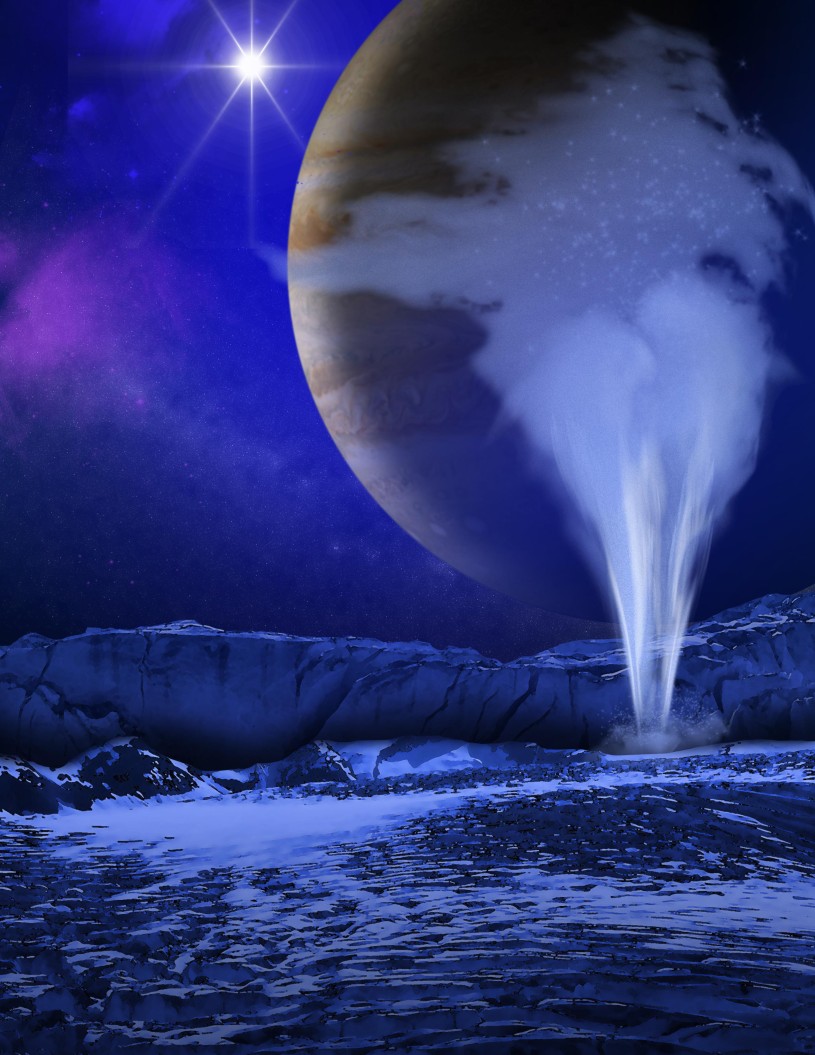
“We know that bacteria can live in little pockets of water called cryopegs; little lenses of fluids have been found trapped in the soil of ice sheets on Earth,” Celestian says. Cryopegs are like little ecosystems or aquaria, and it turns out, he says, that lithium could be a critical ingredient in preserving them.
Standing in the Gem and Mineral Hall where more than 2,000 minerals, rocks, meteorites, and gems from across the globe are on display, Celestian is equally delighted and awestruck by the potential discoveries that await. “Minerals are the foundation of planetary evolution and the evolution of life. There has to be rocks here first. That’s how life took off,” he says.
